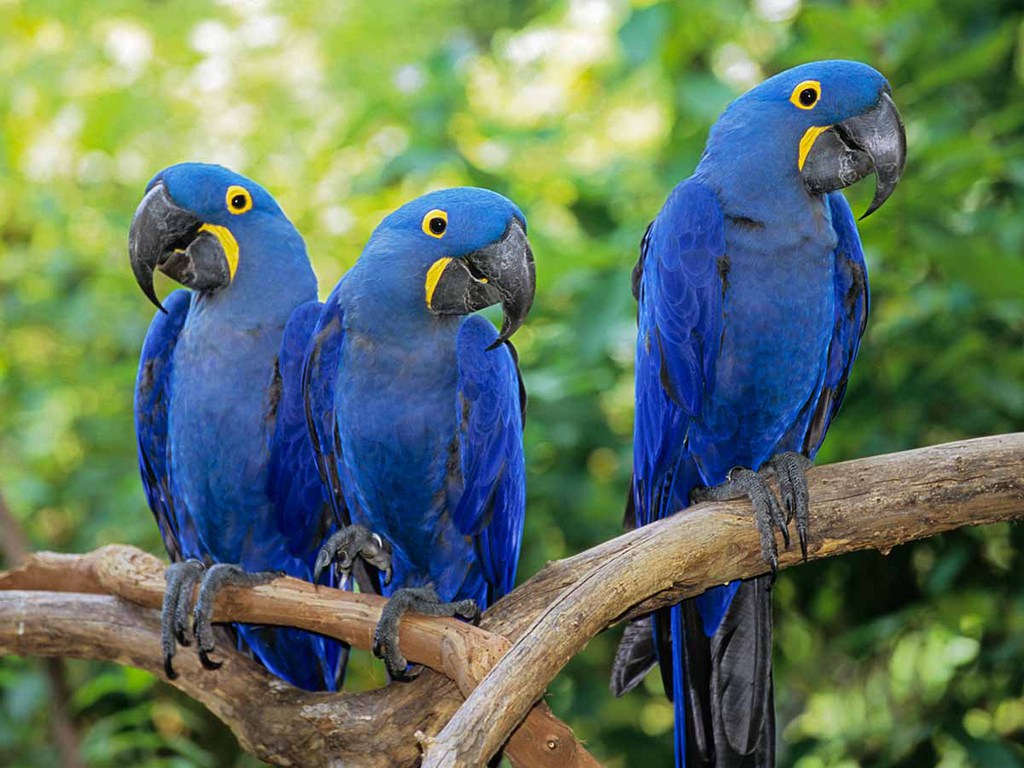Birds are winged and two legged animals that belong to the class Aves or Avialae. Though all birds have wings, not all birds can fly. Thousands of species of this animal exist today, and each of these species is distinct in its own way. They are generally intelligent but they differ in terms of physical characteristics, habits, habitats, breeding grounds and movements. Because of the uniqueness of birds, some animal lovers collect different types of them and have them as pets. The more beautiful and unique a bird is, the higher its value in the market. Here is a list of the 10 most expensive birds in the world today:
10. Rainbow Lorikeet

Photo Source: www.firsthdwallpapers.com
A species of Australasian parrot, rainbow lorikeet is a bird that is most commonly found in the rainforests and woodland areas of Vanuatu, Solomon Islands, Indonesia, Australia and Papua New Guinea. This bird is a medium-sized parrot whose length ranges from 25 to 30 centimeters and whose wingspan is about 17 centimeters. Its head is deep blue and has a blue-black barring and its belly is deep green. This bird is also known for its nomadic movements and for foraging on flowers of shrubs or trees when it wants to harvest pollen and nectar.
9. Paradisaea Minor

Photo Source: planetbirds.blogspot.com
Also known as a “bird of paradise,” Paradisaea Minor is a medium-sized bird that features a maroon-brown body and a yellow crown. Its body is around 32 centimeters long and its upper back has a brownish yellow color. This bird is said to possess toxins on its skin which it derives from its insect preys. Its male counterpart has a dark emerald green throat as well as a pair of tail wires with flank plumes. It is also known for being polygamous by nature. In terms of breeding, this bird typically lays in a nest two eggs that come in pinkish colors and dark markings.
8. Wood Duck

Photo Source: www.flyways.us
More commonly known as the Carolina Duck, wood duck is a species of perching duck that dwells in North America. It is a medium-sized duck with a body that ranges from 47 to 54 centimeters in length and has a wingspan of 66 to 73 centimeters. The adult male version of this duck is characterized by its multi-colored iridescent plumage and red eyes, while its female counterpart is notably less colorful and has a whitish throat and white eye-ring. The breeding habitat of this bird is wooded swamps, marshes and creeks. It takes advantage of nesting boxes located in wetlands and it uses its sharp claws in perching in trees.
7. American Goldfinch

Photo Source: sdakotabirds.com
Also called eastern goldfinch, this bird is a small migratory bird that dwells in North America. During its breeding season, the pat of this bird ranges from mid-Alberta to North Carolina, while during winter, it travels from the south of Canada to Mexico. This bird demonstrates sexual dimorphism during coloration, where its color shifts from vibrant yellow to olive. It is also characterized by its conical beak which it uses to remove seeds from fruits, as well as agile feet which it uses to grip the stems of seed heads.
6. North Cardinal

Photo Source: www.birdlist.org
This passerine bird belongs to the family Cardinalidae and lives in North and South America. Also called “cardinal grosbeak” and “cardinal bunting,” it is typically robust and has very strong bills. Its body is normally 12 centimeters in length and weighs 85 grams. The north cardinal can be easily identified through its red crest that closely resembles the mitre of a Catholic cardinal. Pairs of north cardinals mate for life and stick together until one of them dies. What attracts this bird most is the sight of sunflower seeds.
5. Mountain Bluebird

Photo Source: en.wikipedia.org
Characterized by its light underbelly and black eyes, mountain bluebird is a medium-sized bird that weighs 30 grams and has a body that is 16 to 20 centimeters in length. The adult version of this bird is known to have thin and bright turquoise blue bill while the female version is known for its dull blue wings and tail, as well as grey crown and breast. When this bird wants to catch insects, it hovers over the ground before flying down and preying on its target. It loves eating worms, berries and peanuts.
4. Northern Oriole

Photo Source: www.billholsten.com
Also called Baltimore Oriole, northern oriole is an icterid blackbird that resides in eastern North America. It is a small migratory bird that got its name from Lord Baltimore, the color of whose coat-of-arms it resembles. During summer, this bird is commonly found in the Nearctic. During the breeding season, it migrates from Wisconsin to Maine, then to central Mississippi and Alabama before going to the north of Georgia. The male version of this bird is known to sing aloud and whistle from the tree canopy.
3. Scarlet Tanager

Photo Source: www.alanmurphyphotography.com
The scarlet tanager is an American songbird whose plumage and vocalizations are very much similar to the cardinal bird. The male adult version of this bird has a pale stout smooth bill, with bright red and black wings and tail. The female adult version, on the other hand, is characterized by its yellowish or olive body and olive brown wings and tail. Most of the time, this bird is out of sight because it always forages high in trees. It considers large forested areas as its breeding habitat, especially those that have oaks like the eastern North America.
2. Flamingo

Photo Source: www.bubblews.com
A type of wading bird, flamingo belongs to the genus Phoenicopterus. It is mostly found in the Caribbean, South America, Middle East, Europe and Africa. Its name comes from the word “flamenco” which means fire and it is closely related to grebes. Among the most common attributes of flamingos is that they are strong swimmers and powerful fliers. It could fly with a speed of 35 miles per hour and it can hold its bill upside down when feeding on its prey while skimming the water. The bill of this bird is usually straight and small but it develops a “break” curve after some time.
1. Hyacinth Macaw

Photo Source: parrotsindia.blogspot.com
This parrot is native to central and eastern South America. The length of its body could reach 100 centimeters, making it longer than any other species of parrot. Considered the largest flying parrot, the hyacinth macaw weighs 3.5 kilograms and is often confused with the Lear’s macaw. The population of this bird is suffering nowadays because of habitat loss and bird-trapping for pet trades.
